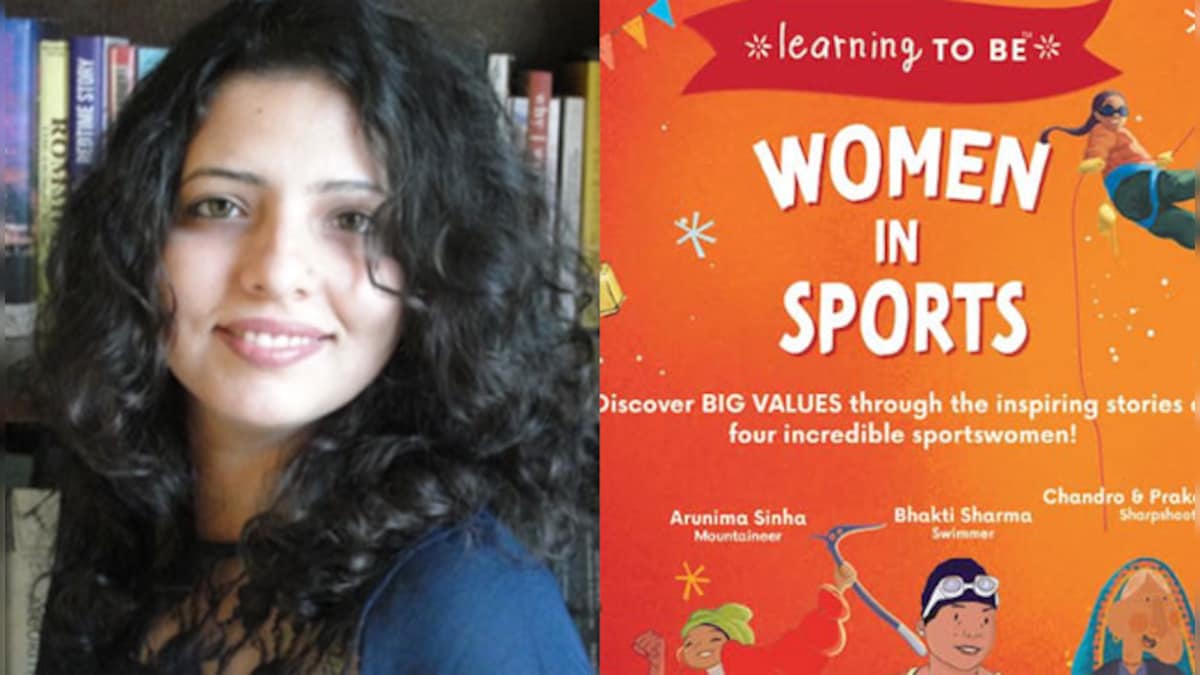Author Pervin Saket has collaborated with four different illustrators to create children’s books around the lives of P.T. Usha, Bhakti Sharma, Arunima Sinha, and Chandro and Prakashi Tomar. These sports women are role models for the young.
Pune-based poet and novelist Pervin Saket is out with a set of four children’s books about sportswomen who have made India proud – athlete P.T. Usha, swimmer Bhakti Sharma, mountaineer Arunima Sinha, and sharpshooters Chandro and
Prakashi Tomar
. The whole project was conceptualized by Chitwan Mittal of AdiDev Press in Kolkata. Ashwitha Jayakumar collaborated on the research, and a team of four illustrators – Rajyasree Sarkar, Prerna Roy, Aparajitha Vaasudev, and Ria Mohta joined in to bring these stories to life.
The titles of the books – Trust with P.T. Usha, Resilience with Bhakti Sharma, Adaptability with Arunima Sinha, and Transformation with Chandro and Prakashi Tomar – highlight values that make these women stand out, and therefore serve as role models especially for girls who want to shine in sports but face various kinds of societal barriers. Hopefully, these books will also sensitize boys who grow up in patriarchal settings that normalize prejudice and discrimination towards girls and women not only in sports but in all walks of life.
Working on this project was quite special for Saket, who got introduced to martial arts as a child. She has a black belt in karate, which she practised for 10 years. She recalls, “Through this sport, I got to participate in national and international tournaments, and represented India in Japan and Thailand. But the truth is that for a long time I did not appreciate the importance of sports.” Her father forced her and her sister to learn karate as “a means of self-defence”. She felt shy and awkward, and despised the thought of even going to karate class until she came to the realization that karate is “not about kicking and punching” but it is “an art form”.
How did the author zero in on these four sportswomen out of the many that we have in India today? Saket had two criteria in mind. She wanted to put the spotlight on women who have not yet received their due” and “unusual women or sports”. She cites the example of Sinha who“shifted her passion to mountaineering after she was already a volleyball champion”. Saket says, “Arunima is the first female amputee to climb Mount Everest and other peaks around the world, and her story breaks stereotypes of disability as a disadvantage.”
Saket was fascinated by Chandro and Prakashi Tomar in particular because “they broke not just records, but also the mould of feminist role models”. She says, “They are uneducated women from a small village who changed the social landscape, and they did not even know they were creating a ‘movement’. These honest, organic stories of courage were inspiring.”
The overall tone across these four books is marked by optimism. The messaging is clear – life can be difficult at times but one can surmount the worst of challenges. The book about Sharma, for instance, emphasizes the importance of training to make what is tough seem easy. She was able to swim across the English Channel in under 14 hours when she was just 16 years old. The book about Usha shows how a sportsperson can flourish with a committed coach. Her coach, O.M. Nambiar, makes an appearance in the book. While she earned glory in the form of models and world records, he was recognized with the Dronacharya Award.
The target audience is children in the age group of four to eight, so the books would be ideal for parents, grandparents, teachers and other caregivers who read to children or with children. The pages are thick and sturdy; one does not have to worry about them being torn easily. There is minimal text because of the age group, and all the stories use a rhyme scheme.
Mittal decided to bring on board a different illustrator for each book because “it is about a different individual, with their own specific context, life story and challenges”. She says, “Going with individual illustrators has meant that we can tailor the style, tone and colours of each book to match each person’s story and create a more cohesive reading experience.” Mittal wanted to work with “South Asian illustrators who could capture the specific essence and ethos of our South Asian stories but whose artwork could appeal to an international audience.” She used online platforms like Instagram and Behance to look for such talent.
It is important to note that these books take one aspect of each icon’s life and encourage the reader to imbibe what they can from that particular role model. The pedagogic intent is quite clear. Adults who are enthusiastic about stories with morals will easily warm up to these books. Those who prefer to introduce critical thinking at a young age might find these books lacking because of their overly sunny temperament, and absence of conflict and nuance.
What children make of these books could vary depending on how the books are introduced, the reading environment at home and in the school, and what the illustrations evoke in their minds. All the books conclude with timelines that mention important milestones in the lives of the four protagonists. Adults who feel adventurous could use these timelines to suggest that children draw up a timeline for their own future life. This could lead to fun outcomes.
Chintan Girish Modi is a writer, journalist and educator who tweets @chintanwriting
Read all the
Latest News
,
Trending News
,
Cricket News
,
Bollywood News
,
India News
and
Entertainment News
here. Follow us on
Facebook
,
Twitter
and
Instagram
.

